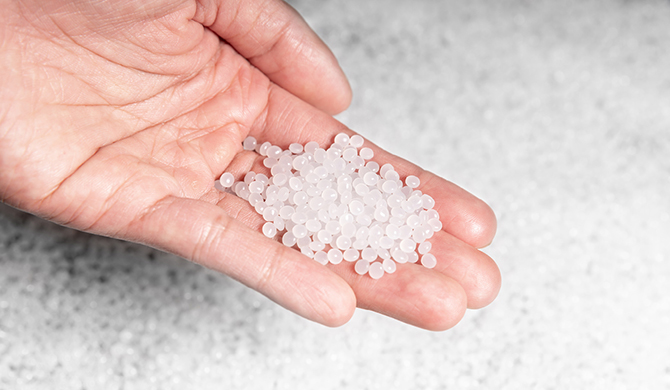Raw material selection
To reduce the environmental impacts of our products, we first identify where such environmental impact mostly come from (which we refer to as the environmental hotspots) and then evaluate the options to minimize these impacts. This could mean updating the design of products, promoting new manufacturing methods or using alternative raw materials. All this needs to happen without compromising on quality and safety, but also without causing new environmental harms (such as deforestation) to reduce one negative impact (such as CO2-emissions).
The LCAs we have conducted on our products tend to indicate that the greatest impact often takes place during the production or in the raw material phase, and that is why we are focusing our efforts there. We are joining forces with suppliers, research institutions and other industries to identify new materials and manufacturing methods.

Life cycle analysis
The first environmental LCAs we conducted on our products where cradle-to-gate LCAs according to the GHG Protocol´s “Product Life Cycle Accounting and Reporting Standard” which means that it only focused on the products carbon footprint.
We quickly realized that there was a risk that we would ignore other potential environmental impacts (so called “carbon tunnel vision”), which lead us to move towards the ISO 14040-series and the integration of multiple environmental impact factors in our LCAs for a more holistic measurement and disclosure of our products environmental footprint. Our first LCAs focused on product groups which we identified as potentially having the biggest environmental impact considering volumes and where conducted on the most representative product in the range. These first LCAs provided already very good understanding of the environmental impacts and their quantification which now inform our environmental strategy (this is how we identified that nitrile examination gloves had, by far, the biggest environmental impact, and that most of these impacts occurred in the production phase). Our ambition is to decline these LCAs to all the products in each group and, ideally, to conduct LCAs for all product groups in our portfolio. To date, LCAs have been completed for multiple items such as medical gloves, aprons, swabs, gowns, and more.
Traceability
Traceability is something that we, at Evercare Medical, have been working with many years together with our manufacturing partners and distributors. It is paramount to enable potential post-market safety actions (such as recalls and quality complaint management) that traceability of each manufacturing lot up to the production line and raw material batch is possible.
It is also something that can be necessary in specific value chains, whenever salient risks of adverse impacts to people or the environment can occur across the entire value chain, hence requiring us to manage such risks beyond our first tier manufacturing partners. For instance, some raw materials, such as wood pulp, natural rubber latex or cotton can often be linked to risks to the environment (such as deforestation, use of pesticides, excessive water withdrawals etc.) or people (such as risks of forced labor or child labor in plantations and farms).
In order to manage such risks, Evercare Medical, is investing much efforts into different initiatives to improve traceability of such materials to minimize such risks from occurring. For instance, latex, pulp or viscose-based materials used in our products are to be controlled for their whole chain of custody through relevant certification schemes. Cotton (e.g. gauze-material) based products are to be made from fibers originating from low-risk countries (such as The United States) which must be documented and traceable up to the finished products. This requires engaging with our manufacturing partners to establish the required systems and procedures. In order to increase confidence in our traceability systems, we have also started testing such products with isotope-analysis for the proof of origin of the materials.







